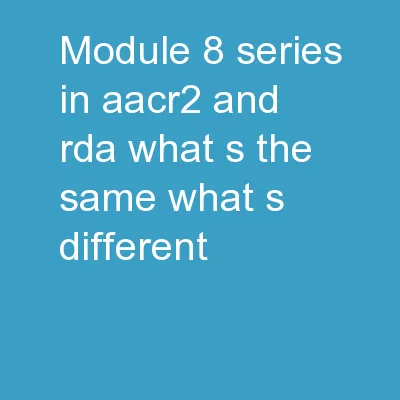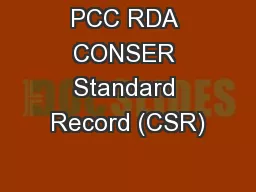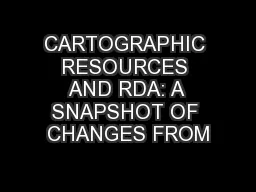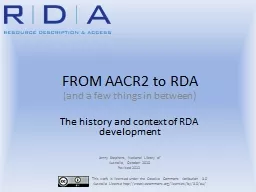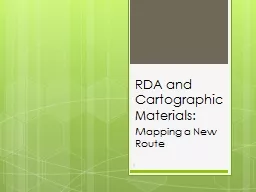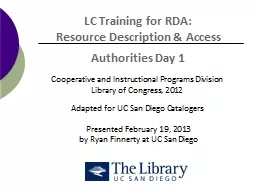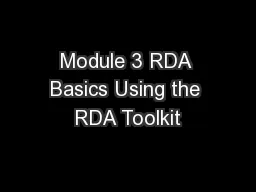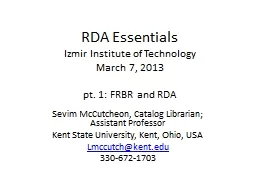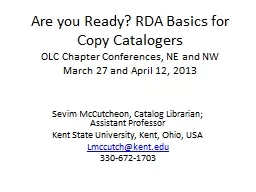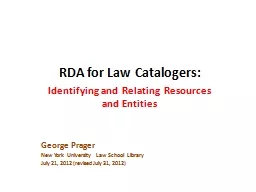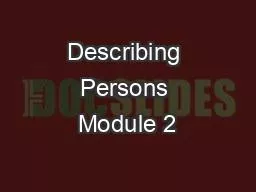PPT-Module 8: Series in AACR2 and RDA: What’s the Same? What’s Different?
Author : yoshiko-marsland | Published Date : 2018-11-09
Exercises Note you will need to use the RDA Toolkit and Catalogers Desktop for this exercise Exercise 1 An established subseries begins to appear on resources without
Presentation Embed Code
Download Presentation
Download Presentation The PPT/PDF document "Module 8: Series in AACR2 and RDA: What�..." is the property of its rightful owner. Permission is granted to download and print the materials on this website for personal, non-commercial use only, and to display it on your personal computer provided you do not modify the materials and that you retain all copyright notices contained in the materials. By downloading content from our website, you accept the terms of this agreement.
Module 8: Series in AACR2 and RDA: What’s the Same? What’s Different?: Transcript
Download Rules Of Document
"Module 8: Series in AACR2 and RDA: What’s the Same? What’s Different?"The content belongs to its owner. You may download and print it for personal use, without modification, and keep all copyright notices. By downloading, you agree to these terms.
Related Documents

